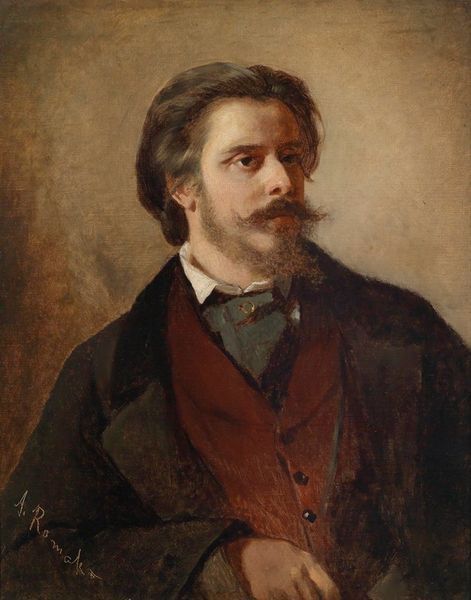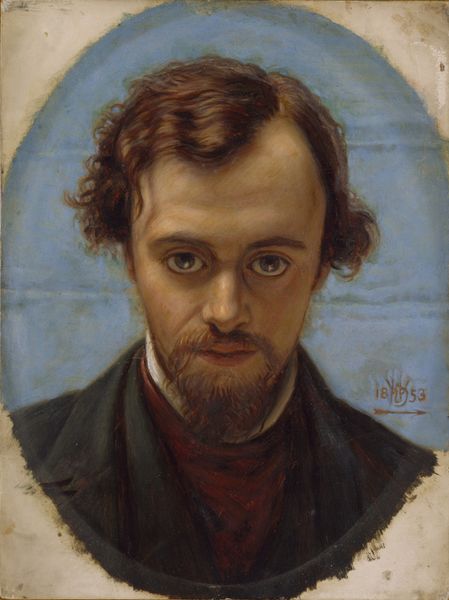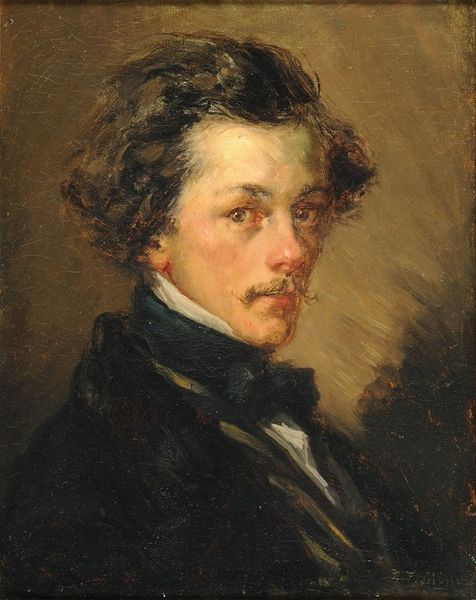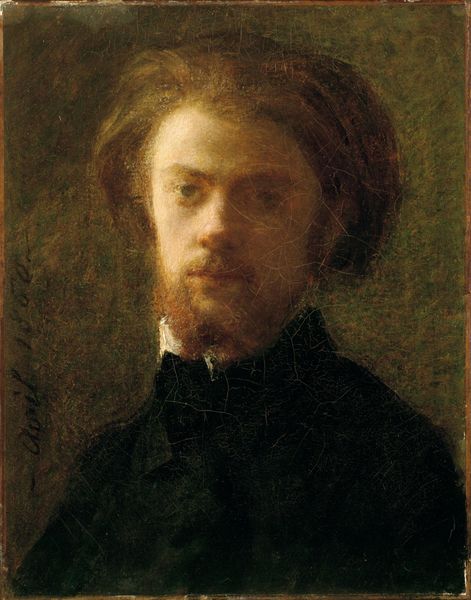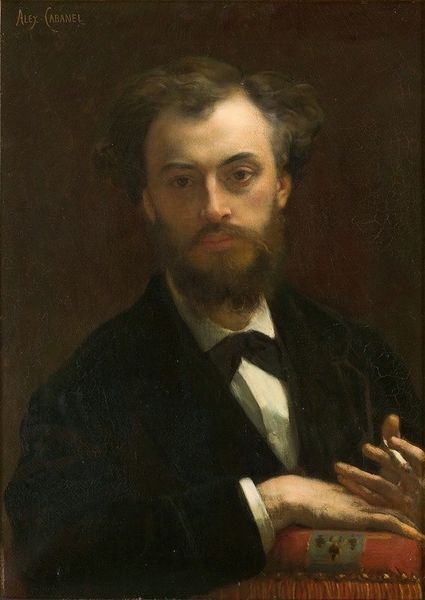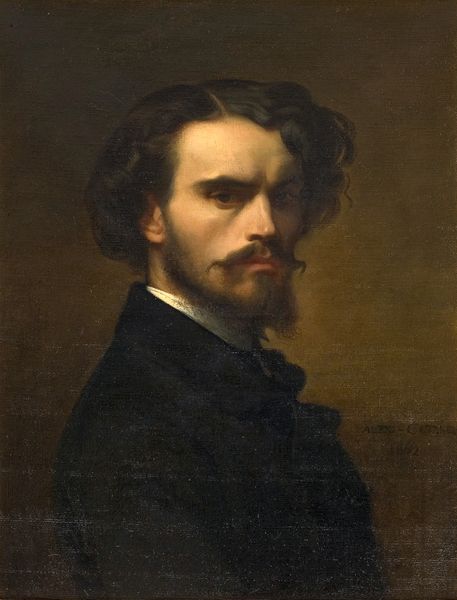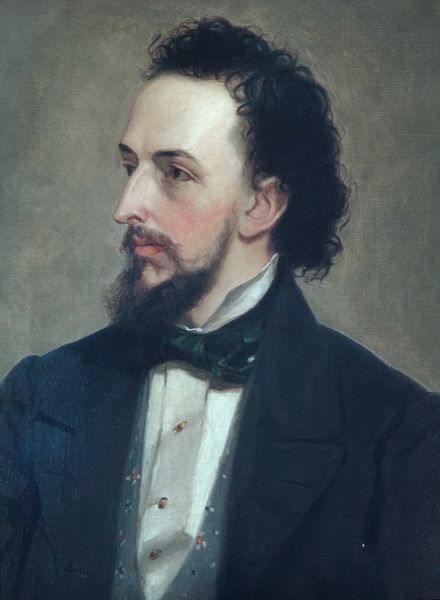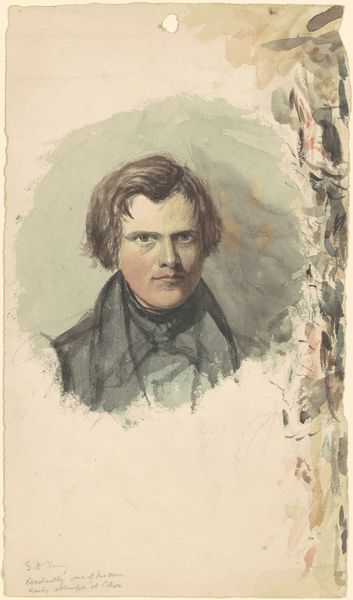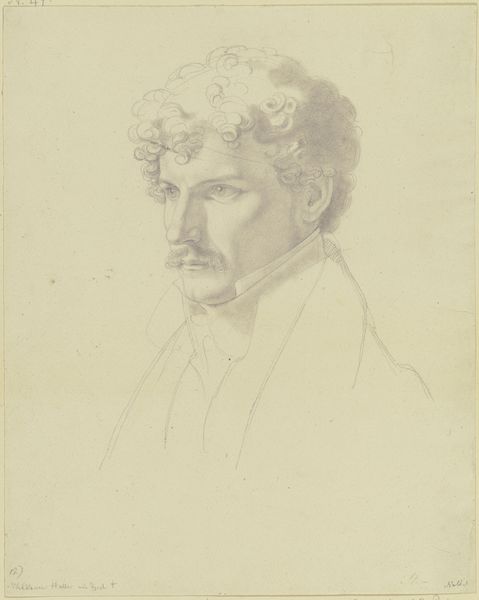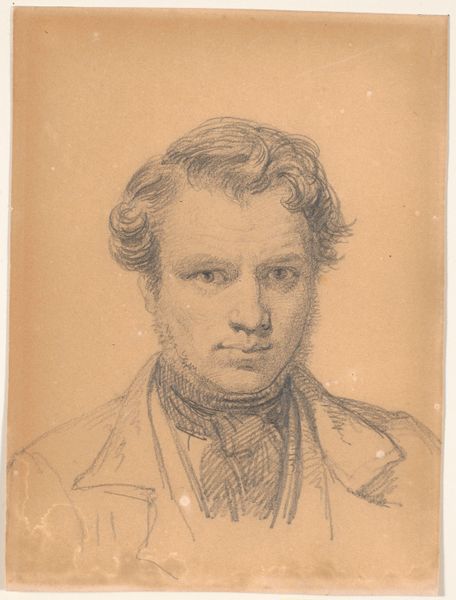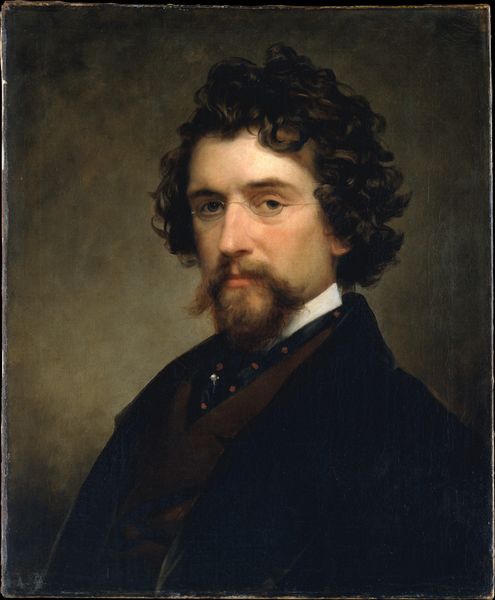
Dimensions: 24.3 x 19.5 cm
Copyright: Public domain
Editor: Here we have Adolph Menzel’s "Portrait of the painter Paul Meyerheim" painted in 1868 using oil paint. It's currently held in a private collection. The composition feels formal, yet intimate somehow, a bit melancholic. What's your interpretation of the piece? Curator: It is interesting to consider Menzel, an artist celebrated for his naturalism, turning to portraiture imbued with romantic sentiment. Note Meyerheim’s gaze, directed slightly upward and away. What feeling does that evoke in you? Editor: A sense of longing, maybe even artistic inspiration or the pursuit of higher ideals. Is this kind of symbolic representation typical of portraiture during this period? Curator: The Romantic era favored portraying the individual as deeply feeling and thoughtful, often connecting them to nature or a spiritual realm. Meyerheim’s slightly disheveled hair, and the muted colors, all point to the trope of the suffering artist. Menzel also suggests Meyerheim’s profession, though subtly, not through palettes or brushes. Editor: How so? Curator: Notice the checkered cravat – perhaps a sartorial marker designating Meyerheim's creative profession. It introduces a playful note amidst the overall seriousness, doesn’t it? Do you think that cravat softens the image? Editor: Yes, it certainly makes him more relatable! I'd assumed his clothing was simply of the time. Curator: Consider the symbolic weight carried by these elements. Menzel and Meyerheim consciously tap into the visual language of their time to express ideas about art and the artist's soul. Editor: It’s fascinating to see how seemingly simple choices can reveal so much about the cultural context. Curator: Indeed. By looking at this portrait through an iconographic lens, we decipher how Menzel uses visual cues to convey character and meaning, connecting to artistic ideals and the Romantic tradition.
Comments
No comments
Be the first to comment and join the conversation on the ultimate creative platform.
